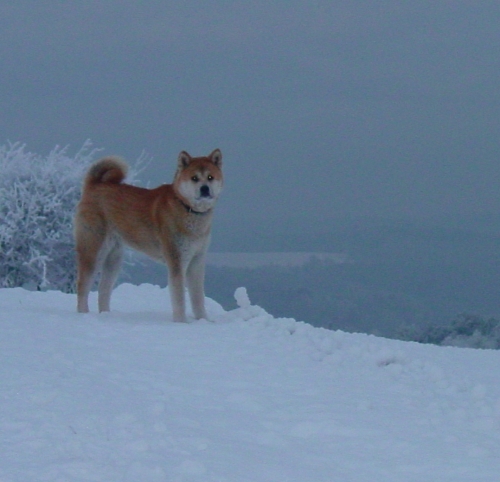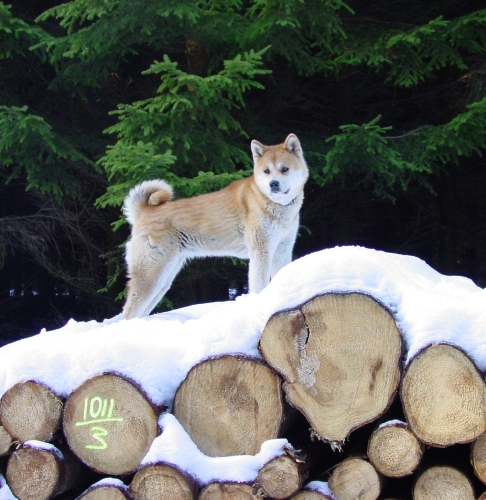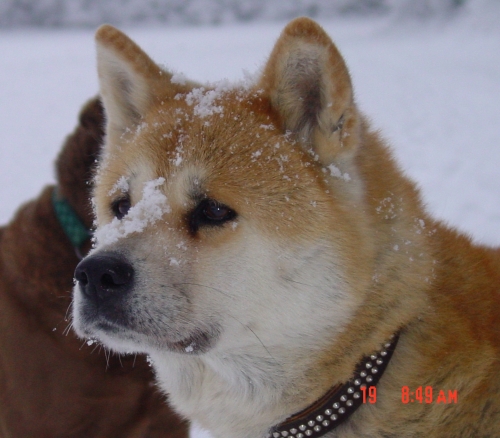The Akita is a strikingly beautiful, imposing dog that exudes self-confidence and dignity. The “Akita dog” is one of the ancient Japanese breeds, whose appearance is reminiscent of both Nordic dogs and Spitz, but still has a very unique nature. Purchasing them just because of their impressive appearance would be negligent!
Racial history
Akitas are a very old Japanese hunting and protection dog breed, they have probably been around since the beginning of our era or even longer. Even today they appear very original, both in appearance and in nature.
Appearance
The Akita breed was officially separated into two breeds in 2000, the elegant, long-legged Japanese type on the one hand and the comparatively heavy, stocky American type on the other. The American Akitas have a shoulder height of 61-66 cm for the females, 66-71 cm for the males, the Japanese dogs are a little smaller on average at 64-70 or 58-64 cm.
The face looks impressive more open than corresponds to the reserved nature, with almond-shaped eyes and furry erect ears – this is particularly beautifully expressed in the red version. The body structure is square, with steeply angled limbs and a tightly curled tail that is carried on the back. Akitas come in many colors; a breed-specific feature of the red and black Japanese Akitas is the lighter undercoat that shines through. The American Akitas are often checked.
The fur is so thick and dense that an Akita can easily allow itself to be covered in snow until only the tips of its ears are visible. On the other hand, this means: In summer, walks should be postponed to the evening and morning hours when it is cooler. The fur is weatherproof but not waterproof, and when swimming (which rarely happens!) it gets soaked.
Like other original breeds, Akitas make barking noises, but there is no actual barking or even yapping.</ p>
Character traits
The Akita is a reserved, outwardly calm, self-confident and hierarchically thinking dog – and this nature is to be respected. They are not one of the stupid, happy, do-nothing dogs, but insist on correct social behavior and maintaining their relatively high individual distance. If this is not met, an Akita will defend itself. A look is usually enough – there are few dogs that can withstand the gaze of an Akita! But if a strange dog becomes really intrusive, an Akita will put him in his place. Actually, every dog owner should understand this: How many of you would put up with being loudly attacked or perhaps groped roughly by total strangers while on the move? But many people expect exactly this behavior from their dogs. If an Akita fends off the intrusiveness of such an untrained, aloof animal, it is immediately said that the Akita is aggressive. That’s why the following applies even more to an Akita owner than to other dog owners: choose carefully where and with whom you let your dog run free.
 Akitas also think hierarchically in the family: They have a single favorite person to whom they are attached with all their heart and who cannot really be replaced. Children are respected, but not necessarily recognized as authorities. The children should be at least as well behaved as the dog and should not disturb him while he is eating or lying down when he wants to be left alone.
Akitas also think hierarchically in the family: They have a single favorite person to whom they are attached with all their heart and who cannot really be replaced. Children are respected, but not necessarily recognized as authorities. The children should be at least as well behaved as the dog and should not disturb him while he is eating or lying down when he wants to be left alone.
The Akita’s need for exercise is best met through long walks; they are ideal sporting dogs certainly not. The retrieving scenes in the film about the legendary Hachiko are quite realistic: an Akita understands retrieving, but he doesn’t understand what it’s for. My own dog has never retrieved, but when she saw our retriever being rewarded for retrieving, she went to meet him and had the stick handed to herand put it at my feet!
Anyone who has ever had the honor of being loved by an Akita will miss this feeling for a lifetime…

Every day we experience the wonders of nature with our dogs. This inspiration is the basis for our lives and our products. In our magazine we share with you our passion for these wonderful animals. Visit our socials and become part of the DOG FIT community.

 </a
</a 


Leave a Reply